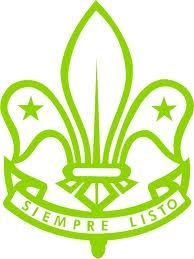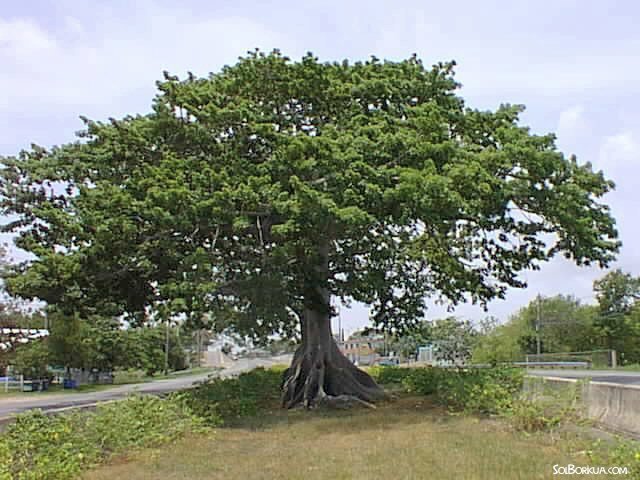Were you ever a Boy Scout

Were you ever a Boy Scout? I was, when I was 13 I joined a troop in Olanchito, in Honduras, we would have our reunions at the parroquial house of the Catholic church. In that time there wasn't much to it, we didn't have much equipment but we did have some fun at the meetings and we would take regular hiking outings.
I have always been very good for walking but only on flat land, (I guess I should be a flat earther) but when it comes to going up hill I am less than average so I had a hard time keeping up. I remember once it had been raining for a couple of days but on this Saturday we went hiking with my patrol, I had a tarp and we set it up at a bend on a rather small river north of town, well we were eating when we started hearing a very loud noise and when we looked upriver it was a flash flood. I had never seen something like that, it was like a frothing wave of dirty water mixed with logs and other debris. We ran away from there as fast as we could, but somehow I was able to take my tarp.

Boy Scout camp in Valle de Angeles, this is owned by the Honduras Boy Scout Assoc. it is quite large and is on very hilly terrain as you can see it is highly forested. Picture sourced from BS de Honduras Facebook page
The real highlight of my time as a Boy Scout was in December of 1975, we went to the first national jamboree to be held in Honduras. The Boy Scout Association has a camp on the road to Valle de Angeles which is a few kilometers from the capital Tegucigalpa on a mountain. Now Olanchito in those days was only accesible by a very difficult road called la culebra (the snake ) because it curved so much, it is mostly over mountains and ends at the port city of La Ceiba. The other way was by railroad, which is what we took, it was cheaper in fact it was free for us, and it was 12 hours on that train, we got to La Ceiba at night and barely got a bus which left us in San Pedro Sula from there we took another bus to Tegucigalpa and got there about at 7:30 am. This was about 600 kms. total, we got just in time to catch the last rental bus they had to take us to the camp.
The camp was ok and the food was great it had been donated by the government, but it was December in the mountains, damn it was cold, there was a good sized creek, but from Olanchito none of us took a swim, it was too cold for us, we are from hot a climate. Since we got the last bus we also got the spot that was furthest from the main camp were all the activity took place so we had to walk a long way to get there. By the fifth day we all wanted to get the heck out of there, we were all homesick. I remember there were 36 patrols and they had some way of grading them and we came out in 6th place, which is a very good place as we were considered something like hillbillies.
That was really the best part of my time as a Boy Scout, the rest was just doing practically the same things over and over, by the way we didn't have the "do a good turn daily" thing luckily so I didn't have to worry about that.
I was a cub scout and earned the Arrow of Light. Regret I did not cross over to Boy Scouts. Both my boys are Boy Scouts now.
I was in Cub Scouts in the Fifties , Boy Scouts in the early sixties and Explorer Scouts for a short time in the middle sixties. Then I discovered gurls. I had trouble concentrating after that.
My younger brother, however made Eagle Scout. That was a big thing back then.
At the risk of sounding like a dumb American...I didn't. Know the Boy Scouts was international. I was in Indian Guides:)...Do you have that down there?
I was recently talking about how little any of us were taught about South America in school. Literally zilch. Love to get down there some day.....
Actually Honduras is in Central America, we only have Cub Scouts, Boy Scouts and Girl Scouts, at leats as far as I know.
Dumb American...sorry. I remember reading about Hammock and should've known that. (I see the map in my head). I've embarrassed myself enough, and sure I spelled that wrong.
I'll quit while I'm behind:)
So where are you, what city if you don't mind my asking, in Honduras? I haz map.

1992.73741...500 miles a day was about average in my truck...faster in a car...MUCH faster on my scooter...might take a while longer in my boat.
Exactly in La Ceiba
where?

Red Dot, you know this is the first time I have tried putting a picture in comments. Walmart is one and a half blocks north.
damnnnn...how'd you do that?
The red dot? I saved the picture then I opened it in my viewer and there's an option that says draw. First time I saw it too.
what viewer?
I'm not so great at this, but I have the picture in a folder ok, I just click it and it opens up in a viewer window and that's where it has a pen icon and it says draw, now maybe not all computers have this.
La Ceiba translated to texan means the cotton tree? so ya'll are cotton pickers? (joke)
I did that when I was a kid. Tough work.
No, the Ceiba tree is a very large tree.

cotton
.
Cotton is the primary natural fibre used by modern humans. Cultivated cotton is also a major oilseed crop, as well as a main protein source for animal feed. Cotton plants thus have an enormous weight in the world economy and are of great importance for the agriculture, industry and trade of many tropical and subtropical countries in Africa, South America and Asia. Consequently, the genus Gossypium has long attracted the attention of scientists.
.
The origin of the genus Gossypium is dated to around 5-10 million years ago.[4] Gossypium species are distributed in arid to semiarid regions of the tropics and subtropics. Generally shrubs or shrub-like plants, the species of this genus are extraordinarily diverse in morphology and adaptation, ranging from fire-adapted, herbaceous perennials in Australia to trees in Mexico.[2]
Well I really don't know I always thought cotton came from a bush.
lookit the post I just did.
I mean I always thought of the Ceiba tree as just a really big tree, I haven't seen them too high but the trunks can get huge, I never equalized them with cotton.